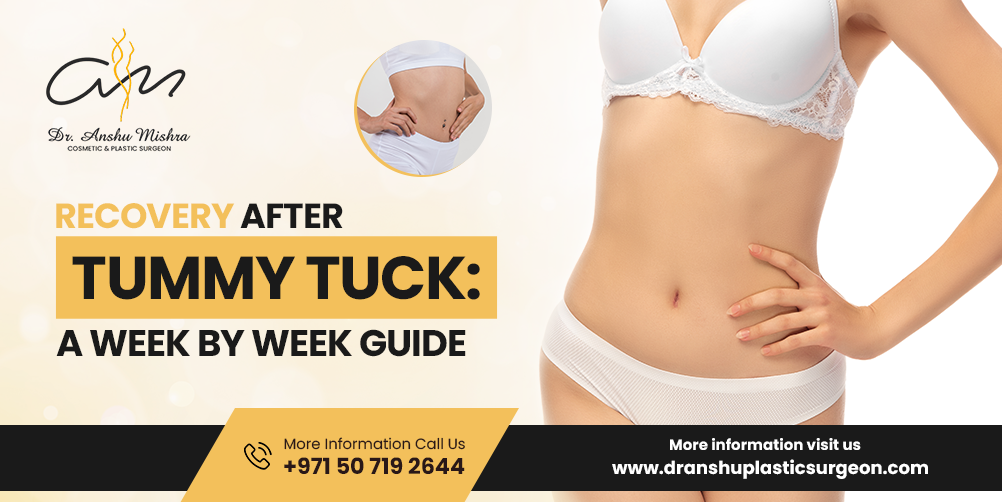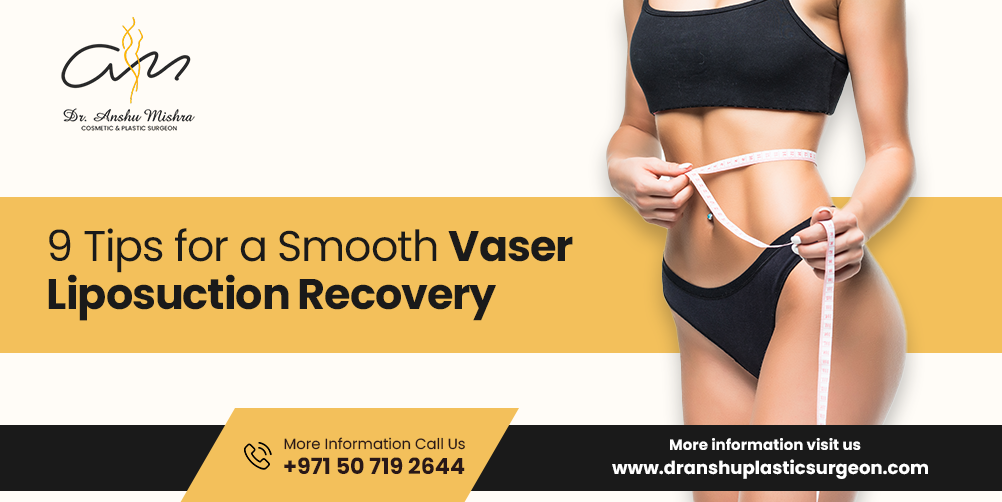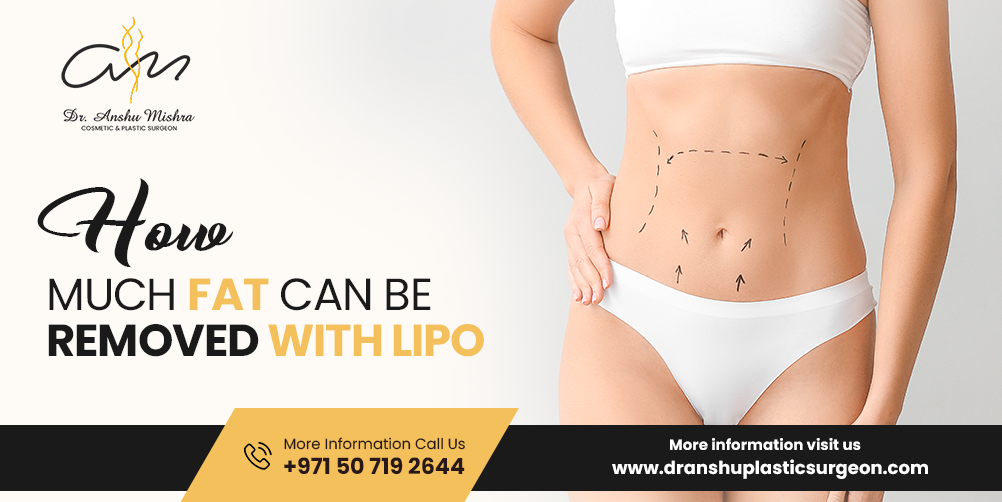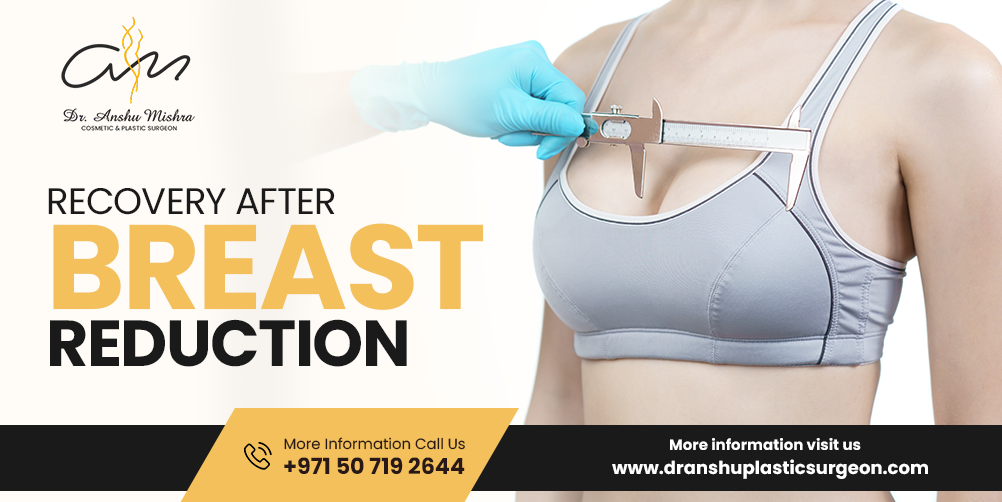Excessive belly fat is the most stubborn and hard to get rid of. Are you troubled by excess fat around your abdomen impacting your appearance? Then you’re not alone. Many people struggle to lose belly fat despite a healthy diet or exercise routine, for those seeking a perfectly shaped belly or tight muscles, a tummy tuck procedure or abdominoplasty appears as a miracle solution. Tummy tuck procedures have gained popularity in the past few years. As per the American Society of Plastic Surgeons, over 130,000 tummy tucks were performed in 2020, making it one of the top cosmetic surgeries.
Individuals who want to improve their body contours opt for this procedure. Studies show patients feel more confident and experience change in their quality of life post-surgery. Tummy tuck enhances physical appearance and also contributes to better health by removing excess skin and fat. Like any other procedure, recovery is crucial in tummy tuck surgery to experience the best results. If you follow a proper recovery plan or guide, healing becomes much easier. Here is a week-by-week guide to assist you through your tummy tuck recovery.
Table of Contents
ToggleWeek 1: The Initial Phase
The initial phase requires lots of care and attention because the first week decides how soon you are going to completely recover from the swelling and treatment scars.
Day 1-2: Post-Surgery Care
- Immediate Recovery: After surgery, you’ll be shifted to a recovery room for observation. Doctors will monitor your vitals .It’s usual to feel groggy and experience pain and discomfort.
- Pain Management: Doctors will prescribe medication for pain to help manage any discomfort. It’s important to follow the doctor’s instructions and take medicines as directed.
- Dressings and Drains: You may have dressings over your stitches and drains to remove excess fluid. The surgeon will explain how to take care of these to avoid infection.
- Rest: Rest is essential for the initial few days. Move carefully and avoid any exhausting activities. Assistance would be required for daily tasks.
Day 3-7: Start to Heal
- Swelling and Bruising: Experiencing swelling and bruising around the abdomen is normal and will gradually reduce over time.
- Walking: Slow walking is suggested for full body movement and blood circulation, but avoid heavy activity. Walking helps in preventing blood clots and supports recovery.
- Hydration and Diet: Water comes first in any recovery process, especially in skin-related procedures. It is advisable to drink plenty of water and eat healthy nutritious but light meals to improve your healing process.
- Follow-Up Visit: Schedule a follow-up appointment with your surgeon to check if recovery is normal, if drain removal is required, and to discuss any issues.
Week 2: Early Recovery
Dealing with Discomfort
- Pain and Swelling: Pain will subside in week 2, but swelling will still be there. Continue your medication as required and follow your doctor’s advice.
- Compression Garment: Compression garment helps in reducing swelling and support your abdomen as it heals. Follow your surgeon’s instructions on how long to wear it each day.
Increasing Activity
- Body Movement: You can do more physical activity but avoid heavy lifting or exercise. Easy stretches and short walks are good for movement.
- Work and Routine Activities: You may return to work provided it’s not physically demanding. Don’t push yourself too hard and learn the signs of discomfort.
Care for Incisions
- Cleaning: Follow your surgeon’s instructions for hygiene maintenance for incision spots. Proper cleaning and putting ointment prevent infection and promote healing.
- Monitoring: Keep a check for any signs of infection during recovery, such as redness, pain, or unusual discharge at the operated area. Consult with your surgeon if you notice anything problematic.
Week 3: Strength Building
Feeling Better
- Reduced Pain: In week 3 pain would be gone or negligible. Doctors may stop medication for pain.
- Swelling: In this phase, swelling will still be present but reduced. You will notice that swelling occurs at night most of the time.
- Skin Care Routine: Start lymphatic drainage massage after 2 weeks. Also start applying Silicon gel based creams on the scars .
More Activities
- Moderate Activity: Start doing moderate activities like light yoga and outdoor walking, but avoid any high-impact activities.
- Driving: Doctors may suggest driving short distances If you’re no longer feeling pain and discomfort.
Follow-Up Appointment
- Check-up: You should go for a follow-up visit with your surgeon. The doctor will examine your condition and update you on recovery. You can ask questions related to diet, exercise, or any other issue.
Week 4: Making Progress
Feeling Normal
- Comfortable: You will start feeling comfortable in 4th week, with significantly reduced swelling and bruising.
- Routine Work: You can resume normal routine work, but be careful with exhaustive activities.
Workout Levels
- Exercise: You can increase your exercise, but a high-impact workout is not advisable at the moment. Check with your doctor to get a clearance.
- Compression Garment: You should continue wearing your compression clothes as advised by the surgeon. Compression supports the abdomen and reduces swelling.
Healthy Diet
- Nutrition: A balanced diet is important throughout the recovery process, take a nutrient-rich diet, including vitamins and minerals to speed up the recovery.
- Hydration: Stay hydrated, and keep drinking water and other liquids to recover skin fast and flush out toxins.
Week 5-6: Appreciate the Changes
Back to Normal
- Swelling Free: Weeks 5th and 6th show the signs of healing, swelling is gone, and you’ll start to see the final results.
- Mobility: Your comfort and mobility have improved, moving around feels easy and you can perform regular activities without hindrance.
Intense Exercise
- Strong Workout: If you are a gym person and missing an intense workout, start attempting this week, but first get approval from the doctor. Work on building up your fitness routine.
- Compression Garment: Compression clothes are not required to be worn all the time now, check with your doctor.
Self-Care
- Skin Care Routine: Continue to apply silicon gel over scar to improve its texture and massage gently for blood circulation.
- Healthy Lifestyle: Adopt a healthy lifestyle to get positive results for skin and healthy body. Include a balanced diet, regular exercise and lots of water to maintain the results of your tummy tuck.
Week 7-8: Long-Term Care
Final Stages of Recovery
- Full Recovery: Most of the patients are fully recovered by the 7th to 8th week. Final results are visible after a tummy tuck, with a flat, tight abdomen.
- Regular Activities: Patients perform regular activities without any restriction in the final stage of recovery including more intense exercise, as directed by their surgeon.
Ongoing Care
- Regular Check-Up: Visit your doctor regularly to ensure recovery is proper. Also, ask questions if you have any.
- Maintain Results: Maintain a healthy diet and routine to retain your new shape. Unhealthy food and bad habits will affect your tummy tuck procedure results.
Emotional Wellbeing
- Confidence: You will feel more confident with a new look. Feeling good about ourselves lifts our mood and energy level. Enjoy your new look and lifestyle.
- Support: If you have any doubts, concerns, or questions, connect with your surgeon. You may also join communities of tummy tuck patients to discuss your overall journey with others.
Tips for a Proper Recovery
- Follow the Doctor’s Instructions: The recovery process is sensitive and crucial after a tummy tuck. Follow the doctor’s instructions throughout your journey, they are experienced and know the best for you.
- Stay Hydrated: Staying hydrated is a thumb rule for skin-related procedures and overall health recovery. Consume liquids to reduce swelling and improve the healing process.
- Eat Healthy: Healthy food promotes a healthy body, food rich in nutrients, vitamins, and minerals supports healing. Eat lots of fruits, vegetables, and protein-rich food.
- Proper Rest: Take proper rest during the recovery phase, especially in the first few weeks. Rest is important to recover body parts.
- Avoid Smoking and Alcohol: Don’t smoke and avoid drinking alcohol for a successful recovery.
- Compression Garment: Compression garment helps to reduce swelling and keep your tummy in shape during recovery.
- Body Movement: Starting with slow walking and you can increase your activity level week by week as per the doctor’s consultation . Avoid strenuous activities for 3-4 weeks.
- Positive Attitude: It’s important to stay positive throughout the process of recovery. Healing takes time and being patient and positive, promotes healing.
Conclusion
People are opting for a tummy tuck procedure because of its positive results. Recovering from tummy tuck is a slow process and requires patience, care, and positivity. This week-by-week guide helps you to recover fast and smoothly. Once you are fully recovered enjoy the positive changes in your appearance and confidence. Consult your doctor whenever in doubt, stay hydrated, consume a healthy diet, and exercise regularly to maintain the results.
If you are planning to get the procedure done ,look for experts who will guide you with proper information.
Dr Anshu Mishra is an expert in tummy tuck surgeries and runs a clinic in Dubai. If you are looking for the best surgeon for tummy tuck and want to have a second opinion you can visit her. After a thorough examination, she offers the best possible solution for any problem. She is one of the best plastic surgeons in Dubai and performs various cosmetic surgeries. Her expertise in tummy tuck or abdominoplasty makes her the best choice for anyone looking to get the surgery done.
Dr Mishra ensures patient’s safety while delivering positive results. She suggests the best options to achieve the patient’s goal. With 11 years of experience in surgery, she has treated many patients successfully. If you want to get a consultation in Dubai, look no further and visit Dr Anshu Mishra for the best results.
FAQ
-
How can I maintain; the results after my tummy tuck surgery?
Maintaining a healthy lifestyle is necessary to keep the effects of a tummy tuck intact. A nutrient-rich, well-balanced diet promotes general health and helps maintain the newly defined belly contours. Frequent exercise helps tone the muscles and keeps extra fat from building up around the belly. Hydration is crucial for the suppleness of the skin and general healing. During the early healing phase, you may help keep the shape by following your surgeon’s instructions and wearing a compression garment. Long-term happiness with your tummy tuck results is also ensured by avoiding substantial weight swings and by following up with your surgeon for any required touch-ups.
-
Incisions after a tummy tuck require what kind of care?
Following a tummy tuck, proper incision care is crucial for ensuring good healing and preventing infections. Keep the incision sites clean and dry, and follow your surgeon’s recommendations for washing and dressing them. Wait until the incisions are completely healed before immersing them in water, such as when taking a bath or going swimming. Monitor the incision locations for symptoms of infection, such as redness, swelling, or unusual discharge, and report any issues to your surgeon right away. Reducing movement around the sites of incisions also aids in healing properly.
-
How should I handle discomfort and agony while I’m recovering?
Following a tummy tuck, pain and discomfort are managed with a mix of supportive measures and prescription drugs. Take painkillers as prescribed by your surgeon as soon as possible after surgery to manage discomfort. By supporting the abdomen, compression garments reduce discomfort and speed up the healing process. It’s also very important to avoid any intense activity and to obtain enough rest. Do not hesitate to call your surgeon if the discomfort continues or gets worse.
-
What is the duration of swelling and when can I expect the outcome?
Swelling can last for several weeks and is a typical aspect of the healing process. Most patients have a noticeable decrease in oedema by the fourth week, though it may still be there, especially at night. Once the majority of the oedema has receded, the complete benefits of your tummy tuck, including a flatter and tighter abdomen, usually become noticeable around the seventh or eighth week.
-
What can I anticipate in the week following my tummy tuck?
Recovery from the tummy tuck depends heavily on the first week. Following surgery, you should anticipate feeling drowsy and experiencing some discomfort, which will be treated with prescription painkillers. To assist drain extra fluid, you’ll probably have dressings and drains. It’s important to follow your surgeon’s care recommendations to avoid infection. It’s important to rest at this time, so stay away from any physically demanding activities. Overall, activity should be modest and mild, while light walking is suggested to increase blood circulation and prevent blood clots.















